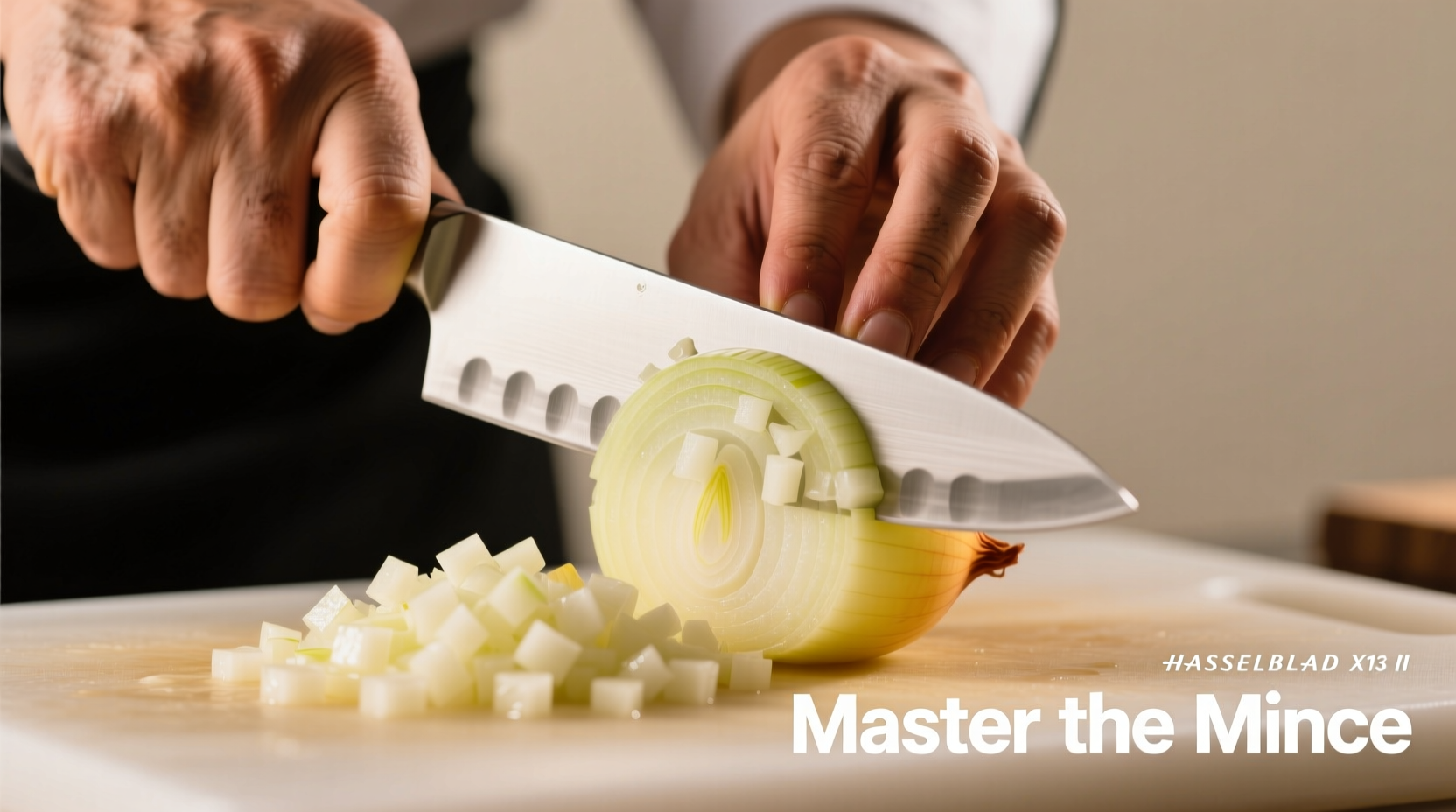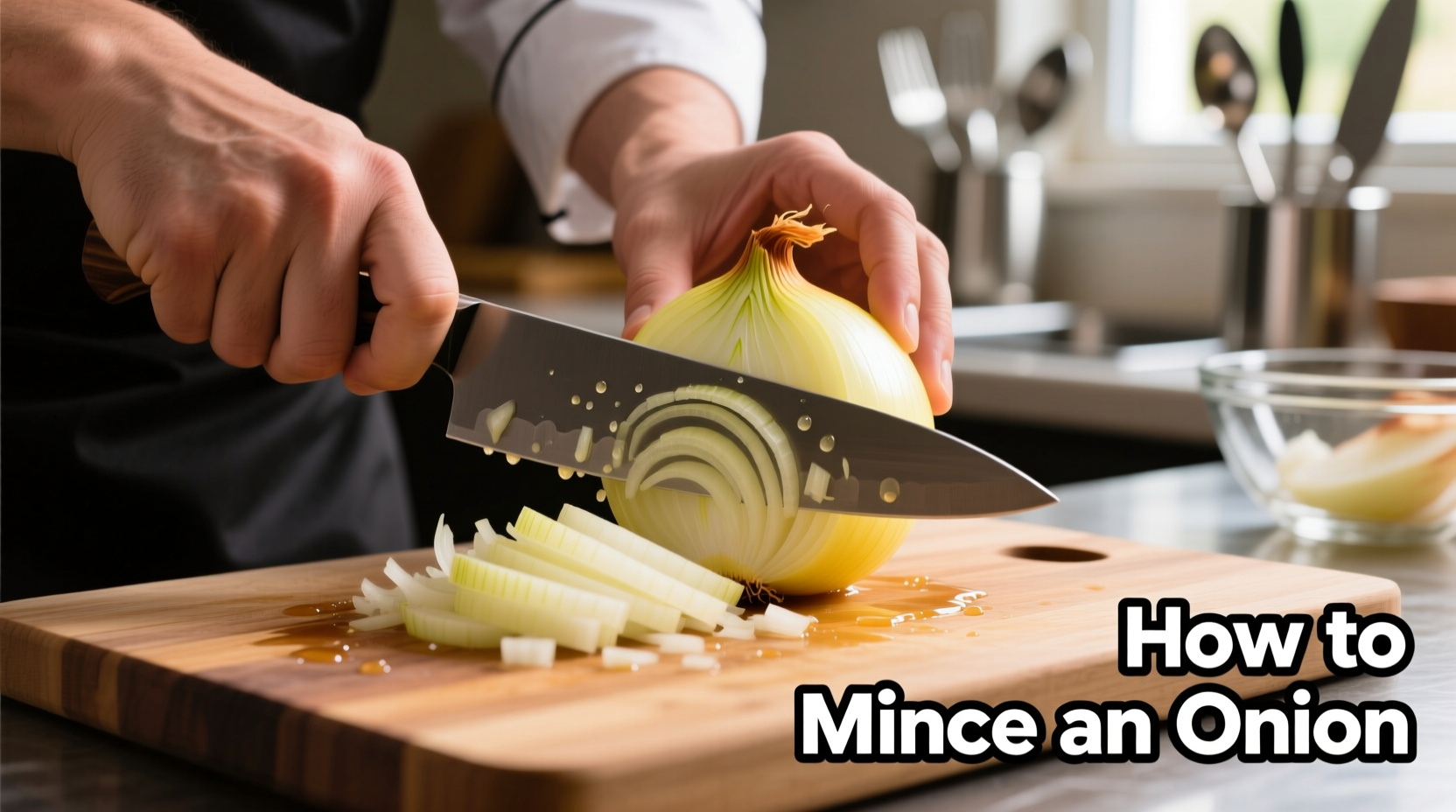Discover how to mince an onion like a professional chef with this comprehensive guide. Whether you're preparing sofrito, mirepoix, or simply adding flavor to your favorite dishes, proper onion mincing creates consistent texture that distributes flavor evenly throughout your recipe. Unlike rough chopping, mincing produces tiny, uniform pieces that cook quickly and blend seamlessly into sauces, dressings, and fillings.
Essential Tools for Perfect Onion Mincing
Before you begin mincing onions, gather these kitchen essentials. A sharp 8-inch chef's knife provides the cleanest cuts with minimal cell damage—this reduces the sulfur compounds that cause tearing. Pair it with a stable cutting board; wooden boards absorb some of the onion's volatile compounds better than plastic. Keep a bowl of ice water nearby to dip your knife blade occasionally, which further reduces tear-inducing vapors. Professional chefs recommend using a mandoline slicer only for experienced users due to safety concerns with such small cuts.
Step-by-Step Onion Mincing Technique
- Peel and trim: Remove the papery skin and cut off the stem end while keeping the root intact. The root contains the highest concentration of sulfur compounds, so leaving it attached until the final cut minimizes tears.
- Halve the onion: Place the onion flat side down and cut vertically through the root end. This maintains structural integrity during subsequent cuts.
- Vertical cuts: With the cut side down, make thin vertical slices from the stem toward (but not through) the root end. Space cuts 1/8 inch apart for fine mince.
- Horizontal cuts: Rotate the onion 90 degrees and make 1-2 shallow horizontal cuts through the layers, again stopping short of the root.
- Final chop: Hold the root end firmly and rock your knife blade through the onion with a smooth motion. Release the root after mincing to avoid fibrous pieces in your dish.
| Onion Cut Type | Size | Best For | Prep Time |
|---|---|---|---|
| Mince | 1/8 inch or smaller | Sauces, dressings, fillings | 3-4 minutes |
| Dice | 1/4-1/2 inch | Salsas, stir-fries, salads | 2-3 minutes |
| Julienne | Matchstick strips | Garnishes, stir-fries | 3 minutes |
Why Onions Make You Cry (And How to Prevent It)
When you cut an onion, you rupture cells containing sulfoxides that convert to sulfenic acid, then transform into syn-propanethial-S-oxide—a volatile gas that reacts with your eyes' moisture to form sulfuric acid. According to research from the American Chemical Society, chilling onions for 30 minutes before cutting slows enzyme activity by 40%, significantly reducing tear production. Professional kitchens often use ventilation hoods or cut onions under running water to disperse the gases. For home cooks, the most practical solution is keeping the root intact until the final cut, as it contains the highest concentration of lachrymatory-factor synthase enzymes.

Avoid These Common Onion Mincing Mistakes
Many home cooks make errors that compromise both safety and results. Never remove the root end first—this causes the onion to fall apart during mincing. Using a dull knife crushes cells rather than slicing them cleanly, releasing more tear-inducing compounds. Rushing the horizontal cuts creates uneven pieces that cook at different rates. For consistent results, maintain even pressure while rocking your knife and keep your non-knife hand in the "claw grip" position to protect fingertips. Remember that proper knife maintenance matters—sharpen your blade monthly for optimal performance when learning how to mince an onion without tears.
Storing Minced Onions Properly
Freshly minced onions retain maximum flavor when stored correctly. Place in an airtight container with a paper towel to absorb excess moisture, which prevents premature spoilage. Refrigerated minced onions stay fresh for 3-4 days—longer than whole onions due to increased surface area. For extended storage, freeze minced onions in ice cube trays covered with olive oil, then transfer to freezer bags. This method preserves flavor compounds better than dry freezing. Never store cut onions in metal containers, as the sulfur compounds react with metals, creating off-flavors. When using frozen minced onions, add them directly to hot dishes without thawing to maintain texture.











 浙公网安备
33010002000092号
浙公网安备
33010002000092号 浙B2-20120091-4
浙B2-20120091-4